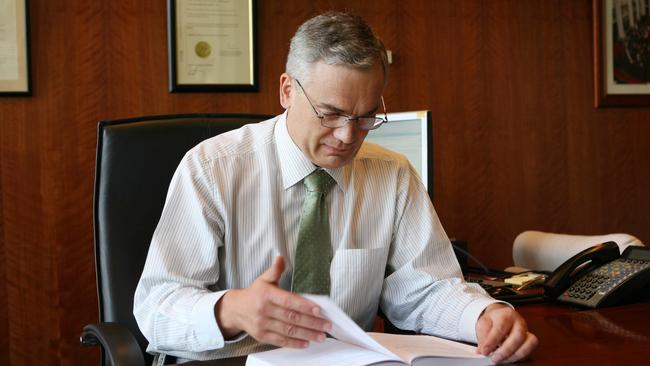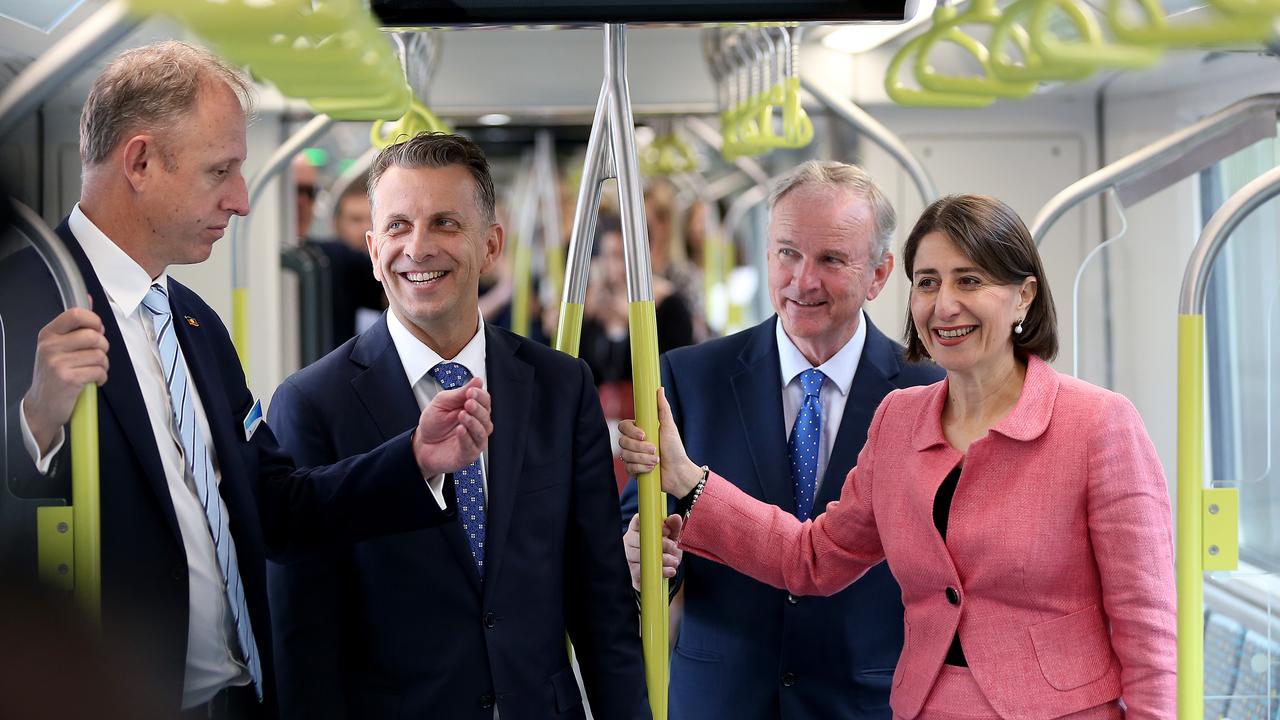Labor campaign secrets detailed in official inquiry
How Labor tries to woo voters using sophisticated volunteer tactics during the 2014 state election.

It is almost four years to the day that Victorian Labor could sense the Coalition’s blood in the water outside the party’s Docklands headquarters in Melbourne.
For months the party leadership, with the aid of former Victorian treasurer John Lenders, had been working on a strategy to blindside the Liberals at the looming November 2014 state election.
The ALP had decided to supercharge its 2013 federal strategy of using extensive networks of volunteers and unionists in Victoria to out-campaign their opponents, borrowing in part from the Obama administration’s 2012 handbook.
In this case, Labor was facing a shell-shocked Victorian government that was barely three years old and onto its second premier.
It was March 3, 2014, when 21 newly hired field organisers had gathered in Labor’s waterfront offices to be briefed by Lenders.
Within two days, the organisers would be standing in Flagstaff Gardens in the city being coached on how to approach would-be Labor voters or volunteers to add to Labor’s rapidly growing Community Action Network, a small army of red shirt-wearing true believers used by leader Daniel Andrews to great political advantage.
While standing in the gardens, the volunteers were told how to conduct a so-called persuasion conversation to either attract someone’s vote or to win their services as a volunteer; or both.
‘‘A persuasion conversation is a meaningful conversation between a trained volunteer and an undecided voter about Labor’s values and accomplishments,’’ the field organisers were informed.
But as they listened, there was already deep disquiet in their ranks, some already doubting the manner in which they would be paid for their work.
Indeed, in the first meeting with Lenders two days earlier, he was confronted with concerns about the legitimacy of paying the field organisers as part-time taxpayer-funded electoral officers.
‘‘Field organisers interviewed by the investigation indicated that their reactions on the announcement of the 60-40 split on day one of their training varied from acceptance to disquiet,’’ the Ombudsman’s report found. ‘‘Mr Lenders confirmed some ‘did raise some surprise’. Others, he said, accepted it as ‘the way it’s done’.’’
Lenders was asked whether the arrangement was legal and, according to one witness, he said the payments were straddling the line between legality and otherwise. ‘‘I have a clear recollection of explaining the need to have the delineation between performing the electorate officer roles and the roles of field organisers,’’ he said.
‘‘I recall that some of the people present were surprised by the arrangement. I recall one person asked a question about whether the arrangements were legitimate. I responded by saying I felt they were but that it would be unwise for field organisers to speak publicly about the arrangements.’’
Lenders, a respected former Labor treasurer and ALP state secretary, is skewered by the Ombudsman’s report, which found he had crossed the line by being the architect of the payments system.
The system led to 21 MPs breaching parliamentary guidelines for wrongdoing that included using casual electoral officers for party political purposes, the inaccurate certification of time-sheets and retiring MPs authorising payments to communicate on behalf of a new candidate.
The damage from this scandal will not lead to criminal charges against anyone but it has opened up sweeping questions about the behaviour of ministers and the lengths to which the government has tried to block the Ombudsman’s investigation.
While Andrews has spruiked the repayment of $387,800 of taxpayers’ money, there is an outstanding debt of $1 million for the fight the government took all the way to the High Court to block the ensuing publicity.
And yet it could be argued the highest price Labor will pay in the long term will be via the golden insights the Ombudsman’s report provides into modern Labor campaigning. It has been unearthed in great detail how Labor has approached the Community Action Network, which is a template for the way it will campaign at the next federal and state elections. The network was so sophisticated that in 2014 Labor flew out two Obama advisers to finetune the strategy. They stayed in Melbourne for an extended period.
ALP national secretary Noah Carroll was involved with the Community Action Network while running the party’s Victorian office, and unions already have begun winding up to fight the next campaigns.
The Ombudsman’s report details how in 2013 the Victorian branch trialled a strategy for the 2013 federal campaign that drew on the lessons of the ACTU’s 2007 Your Rights at Work campaign, community organising tactics developed by unions and the grassroots approach used during Obama’s 2012 campaign. Some details emerged in the past but not to the extent they are outlined in the Ombudsman’s report.
Stephen Donnelly, a past federal ALP co-ordinator, described the network as a ‘‘significant evolution in the way political campaigns are run’’. ‘‘The aim of Victorian Labor’s federal campaign strategy was to cut through all the noise of an increasingly hostile mainstream media to persuade undecided voters in target seats with personal one-on-one conversations,’’ he said.
‘‘We would do this by organising thousands of progressive activists using the neighbourhood team model into a network of dedicated, well-trained activists who would have a personal conversation with voters in their own local areas and convince them to vote Labor.’’
Unfortunately for Labor, the Ombudsman’s report is detailed in how the network was formed, how Labor goes about hiring staff and how paid staff are remunerated.
The detail includes ‘‘top-line responsibilities’’, the role of the party’s internal database, how the field program is to work and the various phases of the program.
While this information is four years old, the only thing the Liberal Party can be guaranteed is it will be more sophisticated in 2018.
Some detail is highly embarrassing, including exactly how voters are exploited by campaigners.
To say the Victorian government cheated its way to office is a stretch. But what is fair to say is the price of rorting some wages may be low compared with the embarrassment flowing from exposing Labor’s campaigning methods.
The idea that Premier Daniel Andrews knew little about this strategy is hard to fathom, given that Lenders was at his side throughout 2014 as his campaigning elder statesman.
As is the way with campaigns, Andrews may well have spent more time with Lenders in the rush to the polls than he did with his own children.




To join the conversation, please log in. Don't have an account? Register
Join the conversation, you are commenting as Logout